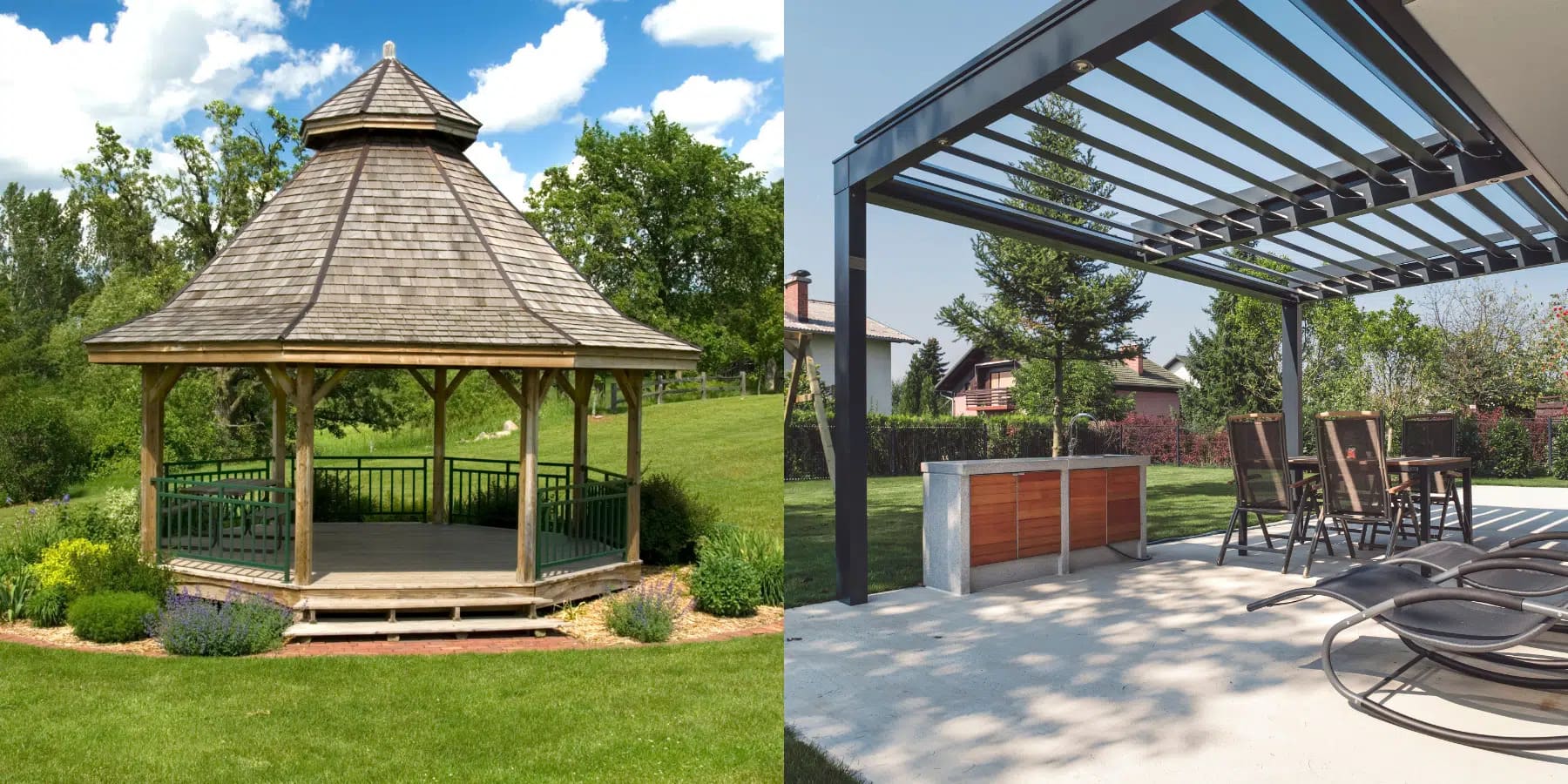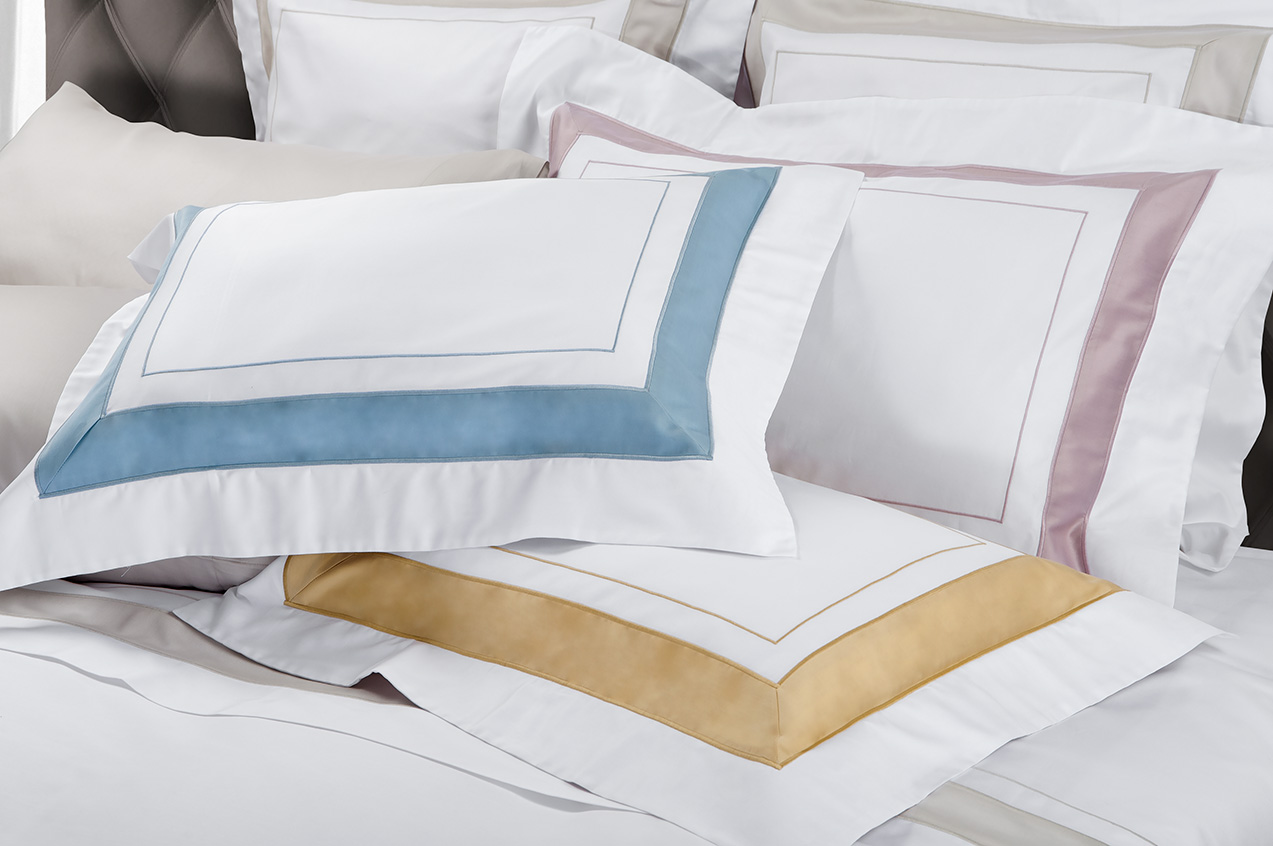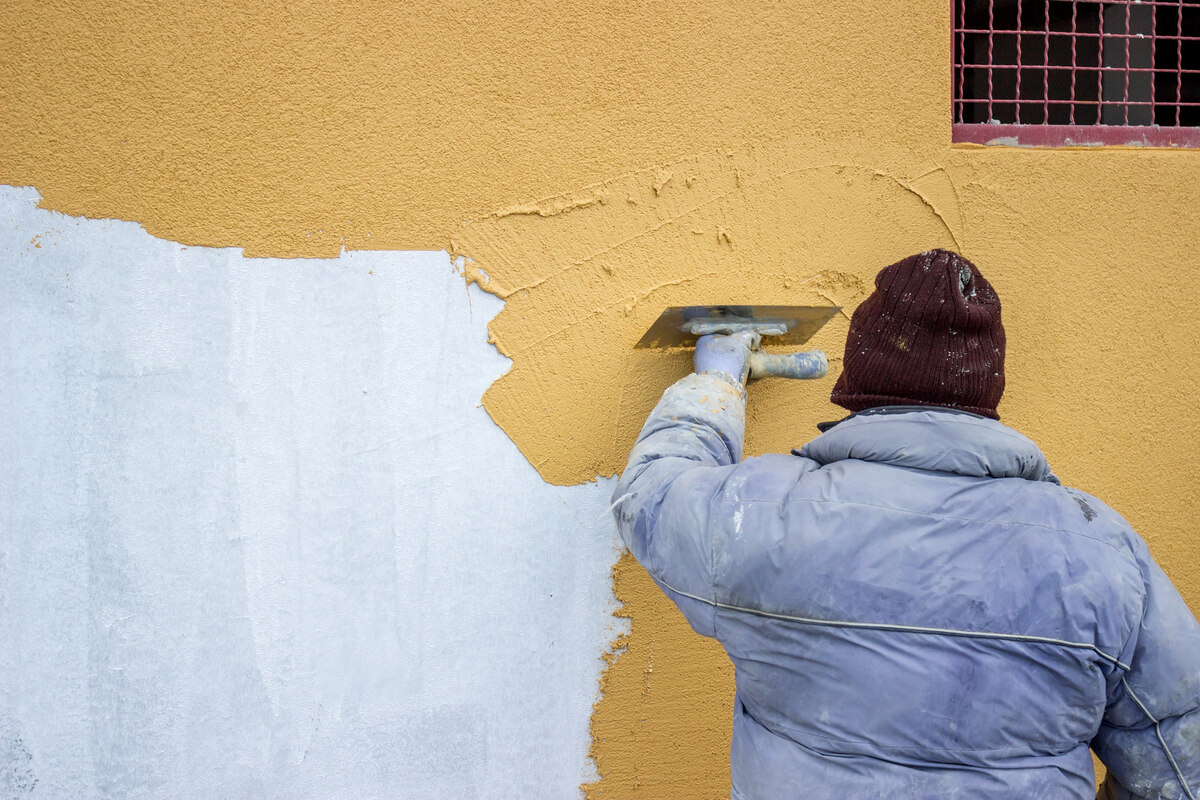Home>Dining>Tableware>What Is The Difference Between Silverware And Flatware


Tableware
What Is The Difference Between Silverware And Flatware
Modified: October 20, 2024
Learn the distinction between silverware and flatware, as well as their variations and common uses. Enhance your tableware knowledge with this comprehensive guide.
(Many of the links in this article redirect to a specific reviewed product. Your purchase of these products through affiliate links helps to generate commission for Storables.com, at no extra cost. Learn more)
Introduction
Welcome to the world of tableware, where every meal becomes an experience. When it comes to setting a beautiful table, the choice of utensils plays a vital role. Two terms often used interchangeably in the world of tableware are “silverware” and “flatware.” While they both refer to utensils used for eating, there are subtle differences between the two.
In this article, we will explore the definition of silverware and flatware and delve into the materials used, design and style differences, functionality, cleaning and maintenance, as well as the pricing and value of each. By the end, you will have a clear understanding of the distinctions between silverware and flatware, enabling you to choose the perfect utensils for your dining table.
Key Takeaways:
- Silverware embodies elegance and tradition, ideal for formal dining. Its intricate designs and heirloom value make it a cherished addition to special occasions, despite requiring regular maintenance to prevent tarnish.
- Flatware offers versatility and practicality for everyday use. Crafted from durable materials like stainless steel, it provides a wide range of styles suitable for various dining settings, making it accessible to different budgets.
Definition of Silverware
Silverware refers to a set of utensils used for dining or serving food, often made of silver or silver-plated materials. Traditionally, silverware was made from sterling silver, which is composed of 92.5% silver and 7.5% other metals for added durability. However, modern silverware may also be made from stainless steel, nickel, or other base metals and coated with a thin layer of silver.
Silverware sets typically include forks, knives, and spoons, designed for specific purposes. This includes dinner forks, salad forks, dinner knives, butter knives, soup spoons, dessert spoons, and teaspoons. The intricate and elegant designs often associated with silverware make it a popular choice for formal dining occasions and special events. The timeless beauty and heirloom value of silverware often make it a cherished possession passed down through generations.
One of the defining characteristics of silverware is its propensity to tarnish over time. This occurs when silver reacts with sulfur compounds present in the air or certain foods. Regular polishing is essential to maintain the luster of silverware and prevent tarnish from dulling its appearance. Although silverware may require a bit more maintenance compared to other materials, its elegance and sophistication make it a prized addition to any table setting.
Definition of Flatware
Flatware, on the other hand, refers to a set of utensils used for eating and serving food, typically made from stainless steel, silver-plated materials, or other metals. Unlike silverware, flatware does not necessarily contain pure silver but rather utilizes a variety of materials to achieve durability, affordability, and ease of maintenance.
A typical flatware set includes forks, knives, and spoons, similar to silverware. However, flatware sets may also include additional serving utensils such as serving spoons, ladles, and pie servers. Flatware is designed to be versatile, suitable for everyday use and various dining occasions.
The primary material used in flatware is stainless steel. This alloy contains iron, chromium, and nickel, which provide strength, corrosion resistance, and a polished appearance. One advantage of stainless steel flatware is its durability and resistance to tarnish, making it a low-maintenance option for daily use.
In addition to stainless steel, flatware may also feature silver-plated materials or other metal coatings to enhance its appearance. These plated finishes give the flatware a sleek and elegant look that closely resembles silverware without the higher price tag. However, it’s important to note that the silver plating on flatware may wear off over time and require re-plating to maintain its aesthetic appeal.
Flatware offers a wide range of design options, from modern and minimalist to ornate and decorative. This versatility allows individuals to choose a style that best matches their personal taste and the overall aesthetic of their dining space. Whether it’s for casual gatherings or formal events, flatware provides a practical and stylish solution for everyday dining.
Materials Used in Silverware
Silverware has a rich history of being crafted from various materials, with the primary focus on silver. Here are the main materials used in the production of silverware:
- Sterling Silver: This is the traditional material used for making silverware. Sterling silver is an alloy made of 92.5% silver and 7.5% other metals, typically copper. It is valued for its durability, shine, and resistance to tarnish. Sterling silver flatware sets are often passed down as family heirlooms.
- Silver Plating: In some cases, silverware is made with a base metal like stainless steel, brass, or nickel, which is then coated with a thin layer of silver. This silver plating provides the appearance of pure silver at a lower cost.
- Stainless Steel with Silver Accents: Another popular option is stainless steel flatware with silver accents. These pieces feature stainless steel as the base metal with decorative elements, such as handles or patterns, made from sterling silver or silver-plated materials. This combination provides durability and elegance.
- Other Metals: While less common, silverware can also be made from other metals like pewter or nickel silver. These materials offer unique aesthetic qualities and may have a lower price point compared to sterling silver.
It’s important to note that silverware made from pure silver or sterling silver may require extra care and maintenance. Silver is prone to tarnish, and regular polishing is necessary to keep it looking its best. On the other hand, silver-plated silverware may require less maintenance but may need to be re-plated over time as the silver layer wears off.
Each material used in silverware production offers its own set of benefits and considerations. The choice of material ultimately depends on personal preference, budget, and desired maintenance level.
Materials Used in Flatware
Flatware utilizes a variety of materials to provide durability, affordability, and ease of maintenance. Let’s explore the main materials used in the production of flatware:
- Stainless Steel: The most common material for flatware is stainless steel. This alloy contains iron, chromium, and nickel, which provide strength, corrosion resistance, and a polished appearance. Stainless steel flatware is known for its durability, resistance to tarnish, and easy maintenance. It is widely favored for everyday use and can withstand frequent washing and use without losing its shine.
- Silver-Plated: Some flatware sets feature a silver-plated surface. This means that a thin layer of silver is applied to a base metal, such as stainless steel or brass. The silver plating gives the flatware an elegant and sophisticated look, resembling silverware, but at a more affordable price. However, it’s important to note that the silver plating may wear off over time and require re-plating.
- Nickel Silver: Also known as German silver, nickel silver is an alloy composed of copper, nickel, and zinc. Despite its name, nickel silver does not contain any actual silver. It is often used in the production of flatware due to its durability and resistance to corrosion. Nickel silver flatware has a silver-like appearance and is a cost-effective alternative to sterling silver.
- Other Metals: Flatware can also be made from various other metals, such as brass, bronze, or titanium. These materials offer unique aesthetic qualities and may be used to create more decorative or specialized flatware pieces.
When choosing a material for flatware, consider factors such as durability, maintenance requirements, and the overall style you desire. Stainless steel is a popular choice for its versatility and practicality, while silver-plated flatware provides an elegant touch. Ultimately, the material that suits your needs will depend on your personal preferences and budget.
Differences in Design and Style
While both silverware and flatware serve the same function of utensils for eating, there are distinct differences in their design and style. These differences contribute to the overall aesthetic and can complement various dining settings. Let’s explore the variations:
- Elegance and Ornamentation: Silverware is renowned for its intricate designs and ornate patterns. From elaborate scrollwork to intricate engravings, silverware often showcases a high level of craftsmanship. The elegant and opulent style of silverware makes it a popular choice for formal occasions and luxurious dining experiences.
- Modern and Minimalist: Flatware, on the other hand, offers a wide range of design options, including modern and minimalist styles. Clean lines, sleek silhouettes, and minimal embellishments are characteristic of contemporary flatware designs. This style aligns with the preference for simplicity and functionality, making it suitable for both casual and formal dining settings.
- Handle Designs: Silverware often features elaborately designed handles that can be adorned with intricate patterns, motifs, or even gemstones. Handles are typically thicker and more substantial, adding to the luxurious feel of silverware. In contrast, flatware handles tend to be slimmer and simpler, focusing on comfort and ease of use.
- Weight and Balance: Silverware is generally heavier and more substantial compared to flatware. The weight of silverware provides a sense of luxury and stability during dining, enhancing the overall dining experience. In contrast, flatware tends to have a lighter weight, prioritizing ease of use and maneuverability.
- Variety of Styles: While both silverware and flatware offer a range of design options, flatware provides a wider variety of styles, including traditional, contemporary, rustic, and themed designs. This allows individuals to choose a style that reflects their personal taste and complements their dining space.
Ultimately, the differences in design and style between silverware and flatware offer options to cater to various preferences and occasions. Whether you prefer the luxurious and ornate elegance of silverware or the modern simplicity of flatware, there is a style available to suit your individual aesthetic and enhance your dining table.
Silverware typically refers to items made of silver, while flatware refers to any type of eating utensils, including those made of stainless steel or other materials. When shopping, be sure to check the material used to make sure it meets your needs and budget.
Differences in Functionality
While silverware and flatware serve the same purpose of eating utensils, there are differences in functionality that distinguish the two. These differences in functionality can impact the usability and versatility of the utensils. Let’s explore the variations:
- Formal vs. Everyday Use: Silverware is often associated with formal dining occasions and special events. The ornate designs and luxurious materials make it ideal for creating an elegant and sophisticated dining experience. On the other hand, flatware is designed to be more versatile and suitable for everyday use, making it practical for both casual and formal dining settings.
- Weight and Balance: Silverware tends to be heavier and more substantial than flatware. The weight of silverware adds to its perceived quality and enhances the dining experience. The balance of silverware is carefully considered to ensure comfortable handling and ease of use. In contrast, flatware tends to have a lighter weight, allowing for easy maneuverability and comfortable handling during everyday meals.
- Function-Specific Designs: Silverware often includes specialized utensils for specific purposes, such as fish knives, oyster forks, or dessert spoons. These functional designs cater to the nuances of formal dining traditions. Flatware, while versatile, may not have as many specialized utensils, emphasizing practicality and simplicity in its design.
- Cutlery Options: Silverware frequently includes a wider range of cutlery options, including a variety of knives and forks for different courses. The combination of different knives, such as dinner knives, butter knives, or steak knives, caters to the specific requirements of formal dining. In contrast, flatware typically offers a more limited selection of knives and forks, suitable for everyday use.
- Serving Utensils: While both silverware and flatware may include serving spoons, ladles, and other utensils, silverware often offers a greater variety of serving utensils. Silverware sets typically feature more elaborate and decorative serving utensils, such as pie servers, cheese knives, or sugar tongs, which are perfect for formal table settings and serving special dishes.
Understanding the differences in functionality between silverware and flatware helps you choose the appropriate utensils for different occasions. Silverware excels in formal dining settings, offering specialized utensils and adding a touch of elegance. On the other hand, flatware prioritizes versatility and practicality, making it ideal for everyday use while still maintaining style and quality.
Cleaning and Maintenance of Silverware
Maintaining the beauty and shine of silverware requires proper cleaning and maintenance. Here are some tips to keep your silverware looking its best:
- Regular Polishing: Silverware is prone to tarnish, so regular polishing is essential. Use a silver polish specifically designed for silverware, following the manufacturer’s instructions. Gently rub the polish onto the silverware using a soft cloth or sponge, then rinse and dry thoroughly. Polishing helps to remove tarnish and restore the luster of the silverware.
- Hand Washing: To prevent damage and preserve the beauty of silverware, it is best to hand wash each piece individually. Avoid using abrasive sponges or scrub brushes that can scratch the silver surface. Use a mild dishwashing liquid and warm water to gently clean the silverware, then rinse thoroughly to remove any residue.
- Drying and Storing: After washing, dry each piece of silverware immediately with a soft cloth to prevent water spots or moisture damage. It is important to store silverware in a dry place, away from direct sunlight and moisture. Consider using a tarnish-resistant storage pouch or wrapping each piece individually in acid-free tissue paper to prevent tarnish.
- Preventing Tarnish: To slow down the tarnishing process, you can use anti-tarnish strips or silica gel packets in your silverware storage area. These help to absorb moisture and reduce tarnish formation. Avoid storing silverware alongside rubber, wood, or reactive metals, as they can accelerate tarnish formation.
- Avoiding Harsh Chemicals: When cleaning silverware, avoid using harsh chemicals or abrasive cleaners as they can damage the silver surface. This includes bleach, ammonia, and chlorine-based cleaners. It is best to stick to mild dishwashing liquids or specialized silver polishes.
Regular maintenance and care will keep your silverware looking beautiful and ensure its longevity. Remember to handle silverware with clean, dry hands to minimize contact with oils and fingerprints that can lead to tarnishing. By following these cleaning and maintenance tips, you can enjoy the timeless elegance of silverware for years to come.
Cleaning and Maintenance of Flatware
Maintaining the cleanliness and condition of your flatware is crucial for its longevity and continued enjoyment. Here are some cleaning and maintenance tips to keep your flatware in excellent condition:
- Hand Washing: To avoid potential damage, it is recommended to hand wash your flatware. Use warm water and a mild dishwashing detergent to gently clean each piece. Avoid using abrasive scrubbers or harsh cleansers that can scratch or dull the surface of the flatware.
- Drying immediately: After washing, thoroughly dry each piece of flatware with a soft cloth or towel to prevent water spots and maintain its shine. Leaving flatware wet can result in unsightly spots or even corrosion. If you prefer, you can also air-dry the flatware on a drying rack.
- Stainless Steel Care: Most flatware is made of stainless steel, which is known for its durability and resistance to corrosion. However, it’s still important to take care of stainless steel flatware properly. Avoid leaving stainless steel flatware in contact with acidic or salty foods for extended periods, as this can cause discoloration or pitting.
- Preventing Scratches: To minimize scratches, avoid using abrasive cleaners or scrubbing pads. Instead, opt for a gentle sponge or soft cloth when cleaning. Additionally, store flatware in a dedicated drawer or divider to prevent pieces from rubbing against each other and causing scratches.
- Silver-Plated Flatware: If your flatware is silver-plated, extra care is required. Follow the manufacturer’s guidelines for cleaning and maintenance, as silver plating can wear off over time. Avoid using harsh chemicals, abrasive scrubbers, or silver cleaners that can damage the silver coating. Hand washing and gentle drying are particularly important for preserving the silver-plated surface.
- Regular Maintenance: Even with proper care, flatware may develop stains or tarnish over time. Regularly inspect your flatware and address any tarnish or stains promptly. Use specialized stainless steel cleaner or silver polish (if applicable) to restore the shine and remove tarnish. Follow the instructions provided by the cleaner or polish manufacturer.
By following these cleaning and maintenance tips, you can ensure that your flatware remains in top-notch condition, ready for everyday meals or special occasions. Remember to treat your flatware with care, and it will continue to enhance your dining experience for years to come.
Pricing and Value of Silverware
Silverware holds both monetary and sentimental value, thanks to its elegance and timeless appeal. The pricing of silverware can vary depending on several factors:
- Material: The material used in silverware significantly influences its price. Pure sterling silver or silver-plated silverware tends to be more expensive compared to other metals or alloys.
- Design and Craftsmanship: The intricacy of the design, the level of craftsmanship, and any decorative elements can also impact the price of silverware. Elaborate patterns, ornate handle designs, and engravings are often associated with higher price points.
- Brand and Reputation: Silverware produced by well-established and renowned brands often commands a higher price due to their reputation for exceptional quality and craftsmanship.
- Antique and Vintage Pieces: Antique or vintage silverware, particularly those with unique historical or collectible value, can be considerably more expensive than newly manufactured pieces. Rarity, age, and historical significance contribute to the increased value of such pieces.
- Weight and Purity: The weight of silverware, measured in troy ounces, can also affect pricing. Higher purity (more silver content) and heavier weight typically result in higher prices.
When purchasing silverware, it’s important to consider the value it holds. Silverware is not merely a functional utensil; it has the potential to become a cherished heirloom passed down through generations. The sentimental value and family history associated with silverware can add to its overall worth.
Proper care and maintenance of silverware can also contribute to its long-term value. Well-maintained silverware retains its shine and appearance, preserving its worth over time. Regular cleaning, polishing, and appropriate storage can help maintain the value and beauty of your silverware collection.
Lastly, when considering the pricing and value of silverware, it’s crucial to remember that the perceived value of silverware extends beyond its monetary worth. The joy and pride that come with using and displaying silverware during special occasions and gatherings are immensely gratifying, making the investment all the more rewarding.
Pricing and Value of Flatware
Flatware offers a wide range of options when it comes to pricing, allowing individuals to find sets that suit their budget and preferences. Here are some factors that influence the pricing and value of flatware:
- Material: The material used in the production of flatware has a significant impact on its price. Stainless steel flatware tends to be more affordable compared to silver-plated or sterling silver sets.
- Quality and Durability: Higher-quality flatware, made with attention to detail and superior craftsmanship, often comes at a higher price. Investing in flatware with better durability ensures that it will last longer, maintaining its value over time.
- Design and Brand: Flatware sets with unique designs or those produced by well-known brands can command a higher price. The reputation and aesthetic appeal associated with certain brands can contribute to the perceived value of the flatware.
- Number of Pieces and Set Size: The number of pieces included in a flatware set affects its price. Sets with more pieces or larger serving sizes generally have higher price points.
- Extras and Special Features: Certain flatware sets may include extras like additional serving utensils, storage racks, or specialized features. These added features can impact the overall pricing and value of the set.
It’s important to consider both the pricing and value of flatware. While pricing reflects the cost and affordability of the flatware set, value encompasses factors such as durability, longevity, and overall satisfaction with the purchase. High-quality flatware that meets your specific needs and preferences offers long-term value, as it will continue to enhance your daily dining experiences and withstand regular use.
Additionally, the perceived value of flatware extends beyond its monetary worth. Displaying and using flatware that aligns with your personal style and complements your dining space brings a sense of joy and pride. Flatware can also hold sentimental value, passed down through generations and becoming a cherished family heirloom.
Ultimately, finding the right balance between pricing and value is essential when choosing flatware. By considering the material, quality, design, and your individual needs, you can find a flatware set that offers both affordability and lasting value for your dining table.
Conclusion
Choosing the perfect tableware to adorn your dining table is an important decision, and understanding the differences between silverware and flatware is key to making an informed choice. Throughout this article, we explored the definitions, materials, design and style variations, functionality, cleaning and maintenance, as well as the pricing and value of silverware and flatware.
Silverware, often made from sterling silver or silver-plated materials, embodies elegance, luxury, and tradition. It is a popular choice for formal dining occasions, featuring intricate designs and ornate patterns that make it a cherished heirloom. However, silverware requires regular polishing and maintenance to preserve its shine and prevent tarnish.
Flatware, on the other hand, is versatile, durable, and suitable for everyday use. Crafted from materials such as stainless steel, silver-plated metals, or other alloys, flatware offers a wide range of design options to suit various styles and preferences. Its practicality, easy maintenance, and extensive range of styles make it a popular choice for both casual and formal dining settings.
When it comes to pricing, silverware tends to be more expensive due to the materials used, intricate designs, and reputation for quality craftsmanship. Flatware, on the other hand, offers a wider range of price points, making it accessible to a broader range of budgets.
Ultimately, the choice between silverware and flatware depends on your personal preferences, intended usage, and budget. Consider factors such as the formality of your dining occasions, the desired aesthetic, and the level of maintenance you are willing to undertake.
Whether you opt for the timeless elegance of silverware or the versatility of flatware, both can enhance your dining experience and create a beautiful table setting. So go ahead and choose the tableware that best reflects your style, and enjoy the pleasure of sharing meals with loved ones accompanied by exquisite utensils.
Frequently Asked Questions about What Is The Difference Between Silverware And Flatware
Was this page helpful?
At Storables.com, we guarantee accurate and reliable information. Our content, validated by Expert Board Contributors, is crafted following stringent Editorial Policies. We're committed to providing you with well-researched, expert-backed insights for all your informational needs.














0 thoughts on “What Is The Difference Between Silverware And Flatware”